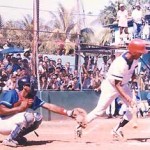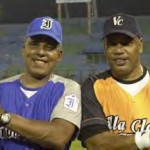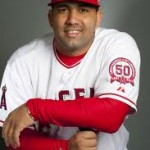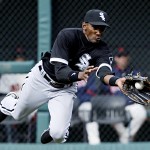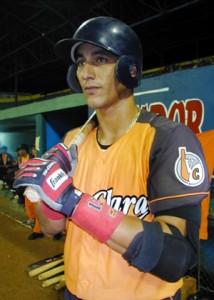In the early years of the Cuban Revolution, the new U.S. Department of Sport experiencing popular formulas to develop what was then called New Sport Participation Scheme, established by Decree Number 51 of the Executive Committee of the Council of Ministers Fidel government. The idea was to renovate existing facilities, build other, recruit and organize thousands of athletes of all ages and to remove the stadium turnstiles to ensure the voluntary assistance.
But, after banning professional baseball, the government realized it needed to find a substitute tournament to occupy the void left by the LCBP during the winter season. The inauguration of the National Amateur Baseball Series (SNBA) on January 14, 1962, rather than an altruistic gesture, was also a way to preach the new dogma. Some even claimed to see in these facts the true origin of Cuban baseball and forgot a stroke eight decades of an epic, not born, but stretched on a temporary mutation under the new circumstances.
The circumstances in which this event took place was favorable. A year earlier, in 1961, the LCBP had demonstrated the lineage of Cuban baseball player when, against the lack of U.S. athletes a successful event was organized only with the existing material from San Antonio to Maisi. In the new metamorphosis is not changed by previous competitive scheme (four clubs in a calendar of all against all), nor the traditional colors (blue, red, green and orange), just changed the names of the teams and, of course, the concept of competence “professional” by “amateur”.
However, six years after the campaign of 1967-68 pointed out perhaps the most important guideline in this race, because absolute territorial representation granted to the winter fair and raised to 12 the number of teams competing.
On December 27, 1974 was the centennial of the start of practice of the ball game in Cuba. With the advent of the historic date devised a new structure for the winter league that much complejizó scheme their regular seasons.
The National Classic was divided into two phases called Qualifying and Selective. The qualifying was developed during the final months of 1974 and early 1975 with 14/9 in a series of 39 games. The novelty was in the disappearance of the Industrial and six casts representing the provinces. Their names were reserved for the selective, elitist agreed to a championship 54 games during the spring, with men of better yields under seven groups.
But in 1976 the government amended the Constitution of the Republic and established a new political-administrative division of fourteen provinces and one special municipality. As a result, the following year, also changed the format of the SNBA. This time, each emerging adopted a franchise territory mapping mode to become involved in the cardinal event of Cuban sports world. With this project, the National Series recovered somewhat the prominence it had lost in 1974 to receive the First Series Selective and focused its complexities in how to bring players to clubs in the major tournament.
Imports of aluminum bat in the season 1976-77 and the adoption of the designated hitter rule by that time were some more guidelines that were introduced in the national pastime in the wake of the provisions established by the International Baseball Association (IBA) in all its members.
Entering the eighties the Cuban winter championship noticed something lackluster. Too much offense that was experienced during that time due to the above factors justified it. Still did not stop restructuring. First 18 teams split into two divisions during the 1983 campaign and then formalized the Eastern and Western Leagues with Playoffs included in the 85.
Meanwhile, a wall of silence erected in the island at the news of the appearance of Barbaro Garbey with the Detroit Tigers in the 1984 season. Instead, Garbey became the national pastime’s history as the first player who formed and trained after 1962, escaping the Cuban regime and played in Major League Baseball America.
This was a precedent which then reached its expression peak on July 4, 1991 when Rene Arocha, a pitcher of Industrial equipment, escaped in full competition while participating in an international tournament as a member of the Cuban team. Contrary to the output of Garbey, Arocha’s flight if it got a powerful impact on the Cuban baseball universe, as he became the first link in a chain of hundreds of “deserters” who bled continuously Cuban winter tournament throughout the decade 90 to the present day.
For the campaign of 1997-98 was refined structure championship Playoff expansion of up to eight teams. Were also taken some internal measures in the interest of improving the quality of life and revitalize baseball tournament at the phenomenon of emigration. As such it was held the first official meeting after 1962, between a major league club and a selection of stars in the Cuban Winter League, faced in Havana on March 28, 1999 Baltimore Orioles and the Cuba’s national team.
But, concerned about the continuing exodus and the unstoppable crisis, the Castro government and sports authorities of the regime took a surprising step when Omar Linares agreed to play professionally in the 2002 season. Linares then became the first player in the amateur era, without escape from Cuba and with the consent of the local managers could contract to serve in the Chunichi Dragons of Japan’s Pacific League.
Instead, the alleged move of openness did not extend beyond the figure of Linares and the phenomenon of continued professionalism and terrible taboo. The young Cuban players who try to prove their talent beyond the borders of the National Series would have to do so under incalculable consequences leave their families forever and be etiqueteados with the degrading title of “traitors.”
So far, the baseball players from the Greater Antilles receive a modest salary and the National Institute of Sports, Physical Education and Recreation (INDER) expede a sports license them to remain all year in provincial competitions, national or international . Members of the Olympic team are given a percentage of their salary in dollars and often are granted certain privileges materials, such as cars or houses.
But even so, has stopped the stampede of athletes in the XXI century and against the run of the new era that lies ahead for Cuba, intense and dramatic chapters opened breaks style with Kendrys Morales, Alexei Ramirez, Dayan Viciedo or Aroldis Chapman.
Sources: DesdeMiPalco/RogelioManzano/InternetPhotos/YouTube/TheCubanHistory.com
Periodo Aficionado (1962-presente)/ The Cuban History/ Arnoldo Varona, Editor
BASEBALL EN CUBA (1962-presente)
En los primeros años de la Revolución Cubana, la recién estrenada Dirección General de Deportes experimentaba fórmulas populares para desarrollar el entonces llamado Nuevo Régimen de Participación Deportiva, establecido por el Decreto Nro 51 del Comité Ejecutivo del Consejo de Ministros del gobierno fidelista. La idea era remozar las instalaciones existentes, edificar otras, reclutar y organizar a miles de atletas de todas las edades y hasta retirar los torniquetes de los estadios para garantizar la asistencia voluntaria.
Pero, después de prohibir el béisbol profesional, el gobierno entendió que necesitaba encontrar un torneo sustituto que ocupara el vacío que dejaba la LCBP durante la estación invernal. La inauguración de la Serie Nacional de Béisbol Aficionado (SNBA) el 14 de Enero de 1962, más que un gesto altruista, también resultó un modo de predicar el nuevo dogma. Algunos hasta pretendieron ver en estos hechos el verdadero origen del béisbol cubano y olvidaron de un plumazo ocho décadas de una epopeya, que no nacía, sino que se alargaba en una mutación temporal conforme a las nuevas circunstancias.
La coyuntura en que se efectuó este evento resultó favorable. Un año antes, en 1961, la LCBP había demostrado el linaje del pelotero cubano, cuando, frente la ausencia de los atletas norteamericanos, se organizó un exitoso certamen sólo con el material existente de San Antonio a Maisí. En la nueva metamorfosis no se varió el esquema de competencia anterior (cuatro clubes en un calendario de todos contra todos), ni tampoco los colores tradicionales (azul, rojo, verde y naranja), sólo cambiaron los nombres de los equipos y, naturalmente, el concepto de competencia “profesional” por el de “aficionada”.
No obstante, seis años después la campaña de 1967-68 señaló, quizás, la pauta más importante en esta carrera, porque otorgó absoluta representatividad territorial a la justa invernal y elevó hasta 12 la cantidad de equipos en competencia.
El 27 de Diciembre de 1974 se celebró el centenario del inicio de la práctica del juego de pelota en Cuba. Con el advenimiento de la histórica fecha se ideó una nueva estructura para la Liga invernal que complejizó mucho más el esquema de sus temporadas regulares.
El clásico nacional quedó dividió en dos fases denominadas Clasificatoria y Selectiva. La Clasificatoria se desarrolló durante los meses finales de 1974 y los primeros de 1975 con 14 novenas en una Serie de 39 juegos. Lo novedoso estuvo en la desaparición de los Industriales y los seis elencos que representaban a las provincias. Sus nombres se reservaron para la Selectiva, un campeonato elitista pactado a 54 juegos durante la primavera, con los hombres de mejores rendimientos agrupados en siete colectivos.
Empero, en 1976, el gobierno reformó la Constitución de la República e implantó una nueva división político-administrativa de catorce provincias y un municipio especial. Como consecuencia, al año siguiente, también se modificó el formato de la SNBA. Esta vez, cada naciente territorio adoptó una franquicia a modo de asignación para involucrase en el acontecimiento cardinal del mundo deportivo cubano. Con ese proyecto, la Serie Nacional recuperó un tanto el protagonismo que había perdido en 1974 al aparecer la Primera Serie Selectiva y centró sus complejidades en cómo aportar jugadores para los clubes del torneo mayor.
La importación del bate de aluminio en la temporada de 1976-77 y la adopción de la regla del bateador designado por esa misma época, fueron algunos lineamientos más que se introdujeron en el pasatiempo nacional como secuela de las disposiciones establecidas por la Asociación Internacional de Baseball (IBA) en todos sus miembros.
Al entrar la década del ochenta el campeonato de invierno cubano se notaba algo deslucido. El exceso de ofensiva que se experimentó durante ese tiempo debido a los factores antes mencionados lo justificaba. Aún así no se detuvieron las reestructuraciones. Primero se separaron los 18 equipos en dos Divisiones durante la campaña de 1983 y luego se formalizaron las Ligas Oriental y Occidental, con Playoff incluido en el 85.
Mientras, un muro de silencio se levantó en la Isla ante la noticia de la aparición de Bárbaro Garbey con los Tigres de Detroit en la temporada de 1984. En cambio, Garbey pasó a la historia del pasatiempo nacional como el primer pelotero que, formado y entrenado después de 1962, escapaba del régimen cubano y jugaba en las Ligas Mayores de Béisbol de Estados Unidos.
Fue éste un antecedente que luego alcanzó su expresión culminante el 4 de julio de 1991 cuando René Arocha, lanzador del equipo Industriales, se fugó en plena competición mientras participaba en un torneo internacional como integrante de la selección cubana. Contraria a la salida de Garbey, la huida de Arocha si consiguió una repercusión impactante en el universo beisbolero cubano, pues él se convirtió en el primer eslabón de una cadena de cientos de “desertores” que desangraron continuamente el torneo invernal cubano por toda la década del 90 hasta los días actuales.
Para la campaña de 1997-98 se perfeccionó la estructura del campeonato con la ampliación de los Playoff hasta ocho equipos. También se tomaron algunas medidas de orden interno con el interés de mejorar la calidad de vida de los beisbolistas y revitalizar el torneo ante el fenómeno de la emigración. En ese sentido también se realizó el primer encuentro oficial, después de 1962, entre un club de Grandes Ligas y una selección de estrellas de la Liga invernal cubana, al enfrentarse, en la Habana, el 28 marzo de 1999 los Orioles de Baltimore y el equipo nacional de Cuba.
Pero, preocupados ante el éxodo constante y la indetenible crisis, el Gobierno de Castro y las autoridades del régimen deportivo dieron un sorprendente paso, cuando accedieron a que Omar Linares jugara como profesional en la temporada del 2002. Linares se convirtió entonces en el primer pelotero de la era aficionada que, sin escapar de Cuba y con la anuencia de los directivos locales, lograba un contrato para servir en los Dragones de Chunichi de la Liga del Pacífico en Japón.
En cambio, la supuesta movida aperturista no trascendió más allá de la figura de Linares y el fenómeno del profesionalismo continuó como terrible tabú. Los jóvenes peloteros cubanos que intentaran probar su talento fuera de las fronteras de la Serie Nacional tendrían que hacerlo bajo incalculables consecuencias: abandonar a sus familias para siempre y ser etiqueteados con el degradante título de “traidores”.
Hasta el presente, los beisbolistas de la mayor de las Antillas reciben un modesto salario y el Instituto Nacional de Deportes, Educación Física y Recreación (INDER) les expede una licencia deportiva para que se mantengan casi todo el año en competencias provinciales, nacionales o internacionales. A los miembros de la selección olímpica se les entrega un por ciento de su sueldo en dólares y a menudo se les otorgan ciertas prebendas materiales, como autos o casas.
Pero ni así, se ha detenido la estampida de los atletas que, en pleno siglo XXI y frente a la antesala de la nueva era que se aproxima para Cuba, abren intensos y dramáticos capítulos con escapadas al estilo de Kendrys Morales, Alexei Ramírez, Dayán Viciedo o Aroldis Chapman.
Sources: DesdeMiPalco/RogelioManzano/InternetPhotos/YouTube/TheCubanHistory.com
Periodo Aficionado (1962-presente)/ The Cuban History/ Arnoldo Varona, Editor




